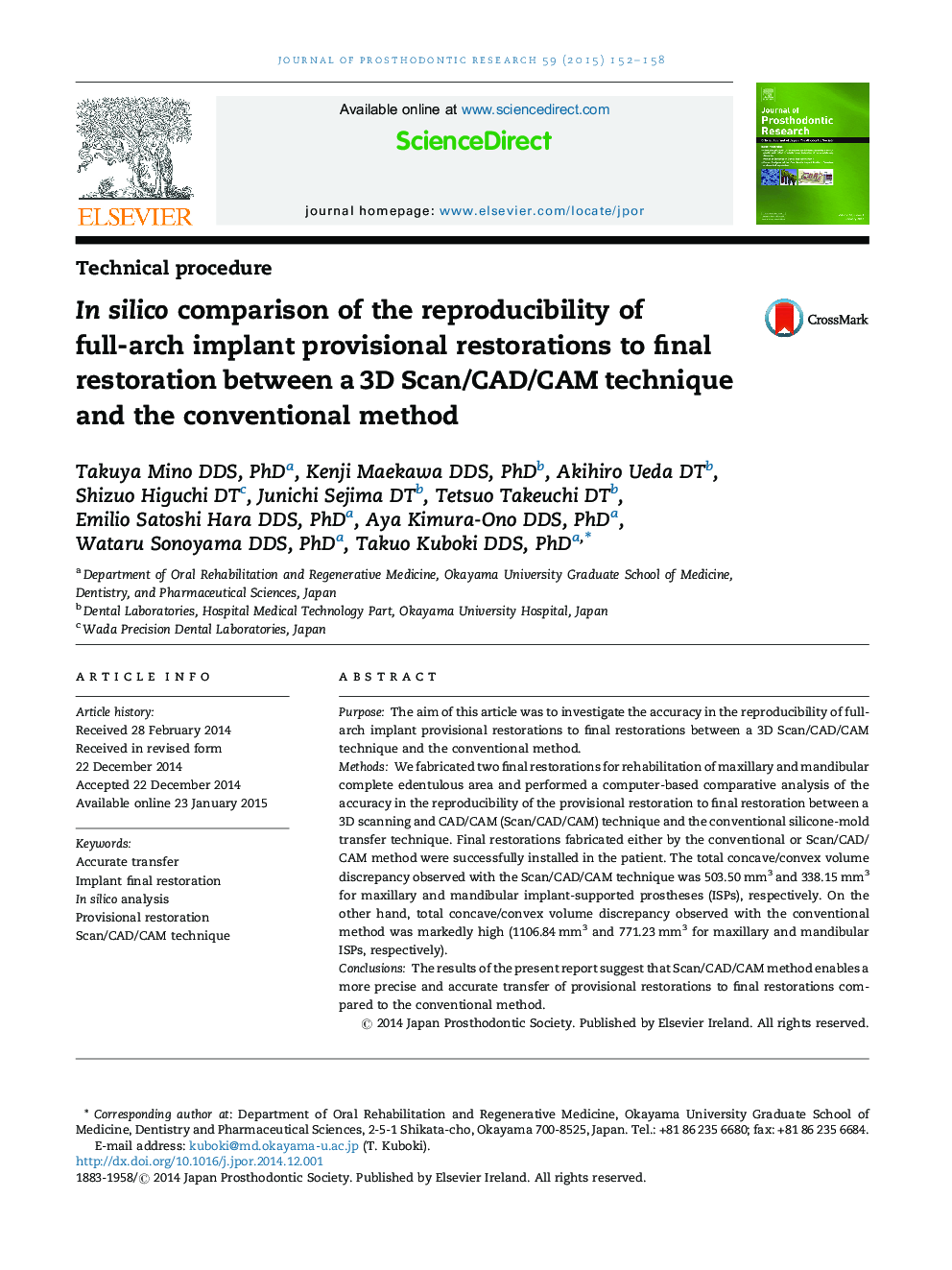| Article ID | Journal | Published Year | Pages | File Type |
|---|---|---|---|---|
| 3160602 | Journal of Prosthodontic Research | 2015 | 7 Pages |
PurposeThe aim of this article was to investigate the accuracy in the reproducibility of full-arch implant provisional restorations to final restorations between a 3D Scan/CAD/CAM technique and the conventional method.MethodsWe fabricated two final restorations for rehabilitation of maxillary and mandibular complete edentulous area and performed a computer-based comparative analysis of the accuracy in the reproducibility of the provisional restoration to final restoration between a 3D scanning and CAD/CAM (Scan/CAD/CAM) technique and the conventional silicone-mold transfer technique. Final restorations fabricated either by the conventional or Scan/CAD/CAM method were successfully installed in the patient. The total concave/convex volume discrepancy observed with the Scan/CAD/CAM technique was 503.50 mm3 and 338.15 mm3 for maxillary and mandibular implant-supported prostheses (ISPs), respectively. On the other hand, total concave/convex volume discrepancy observed with the conventional method was markedly high (1106.84 mm3 and 771.23 mm3 for maxillary and mandibular ISPs, respectively).ConclusionsThe results of the present report suggest that Scan/CAD/CAM method enables a more precise and accurate transfer of provisional restorations to final restorations compared to the conventional method.
